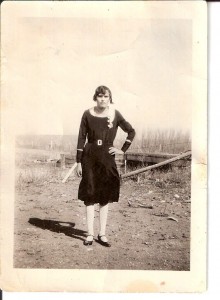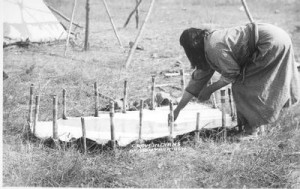
Cecilia LaRance was born in 1915 in a cabin on the South Fork of the Teton River. Her grandparents were among the Métis families who had settled along the Rocky Mountains between Heart Butte and Augusta in the late 1800s. Growing up in the distinct culture formed by the fusion of French, Scottish, Chippewa, and Cree heritages, Cecilia belonged to the last generation of children to experience the self-sufficiency and “old ways” of this Métis community.
The French Canadian LaRance family settled along the Rocky Mountain Front in the 1870s. Cecilia’s grandmother, Marguerite LaRance, was the first person buried at the Métis cemetery nestled in the trees along the South Fork. Cecilia’s father, James LaRance, was born at St. Peter’s Mission west of Fort Benton. When James was left with three small children after his first wife’s death, he married soft-spoken and hardworking Mabel Fellers, whose family had fled to Montana after the failed Northwest Rebellion of 1885.
The couple raised their family on a squatter’s homestead on Willow Creek, furnishing their single-room cabin with a woodstove, a large table, and apple-box benches. James’ rocker sat near Mabel’s sewing machine by the window. The cabin lacked electricity and indoor plumbing, and the LaRances bathed in a galvanized tub behind two chairs draped with a sheet for privacy. Cecilia and her sisters shared a bed, their brothers slept on a foldout sofa, and the baby’s hammock hung over the parents’ bed. When guests visited, they slept in the only space left: under the table. “We didn’t have room enough to keep a moth’s suitcase in that house,” Cecilia remembered. Continue reading A Métis Girlhood
